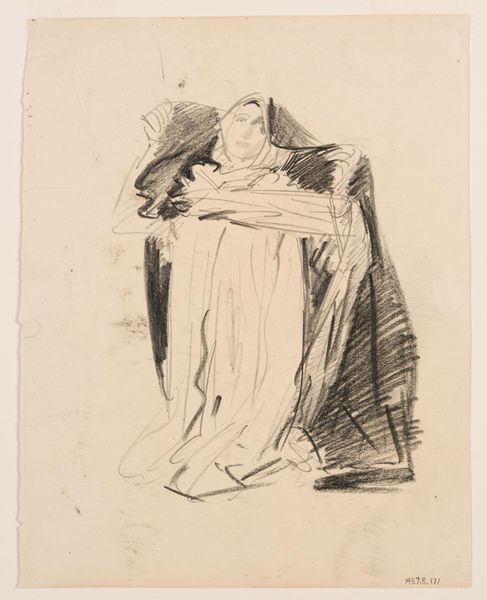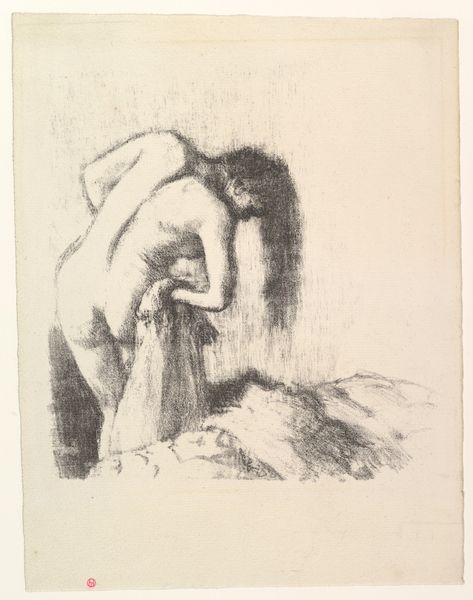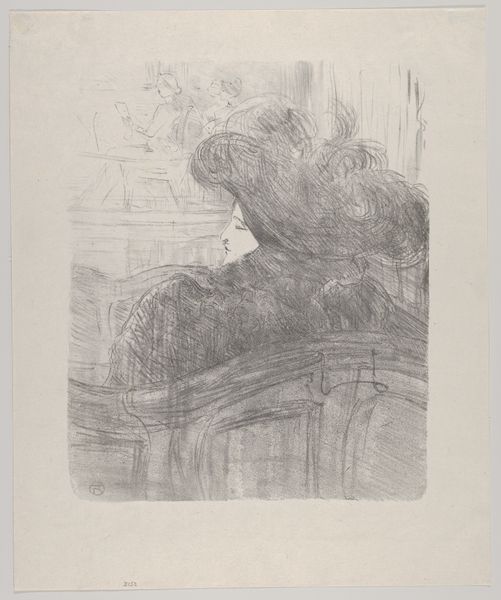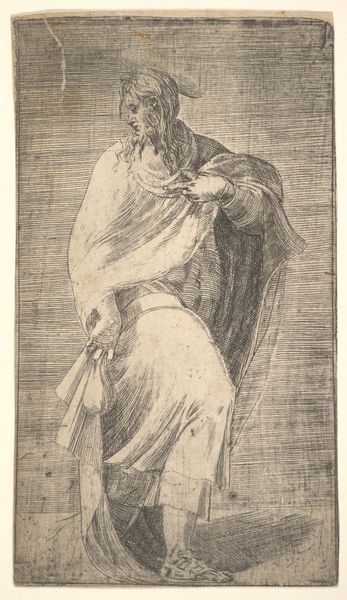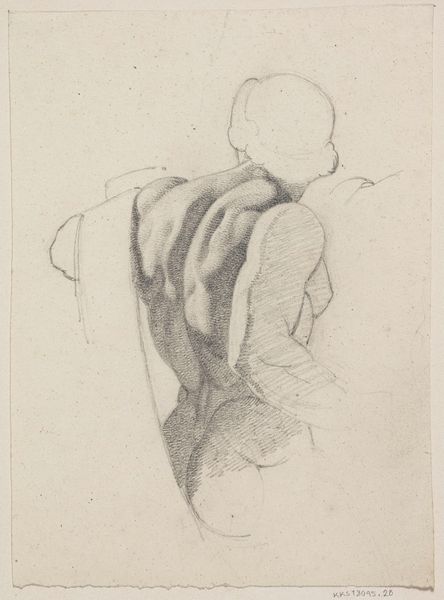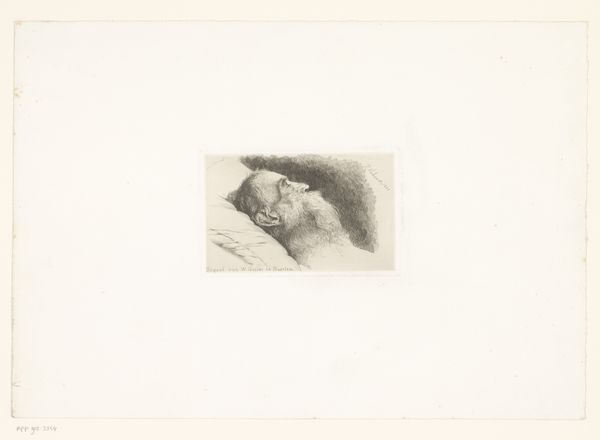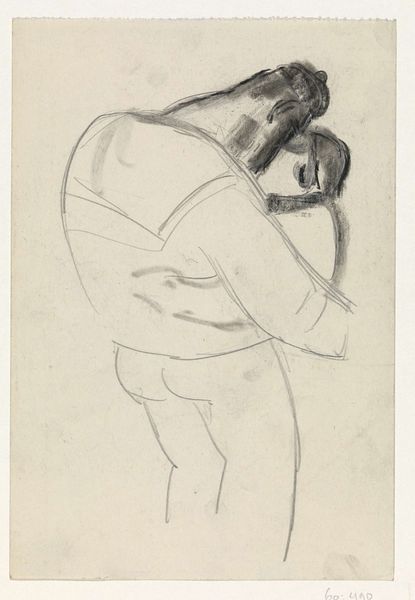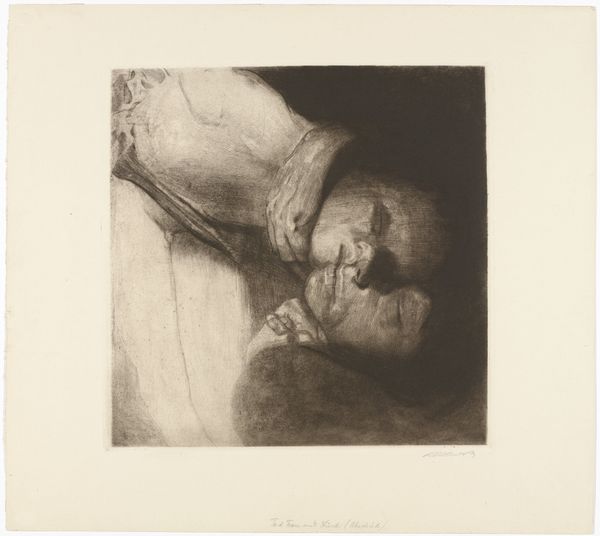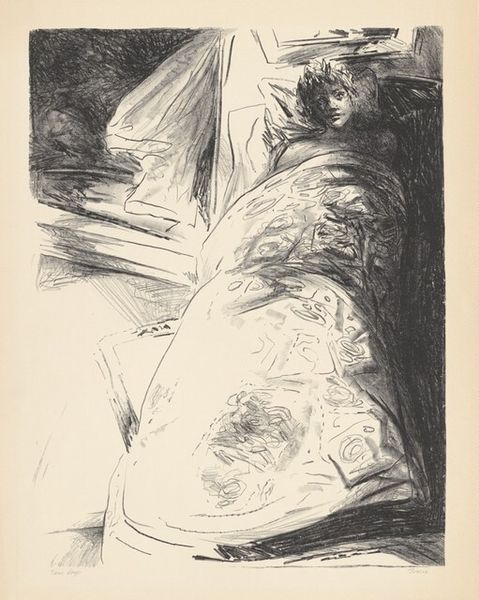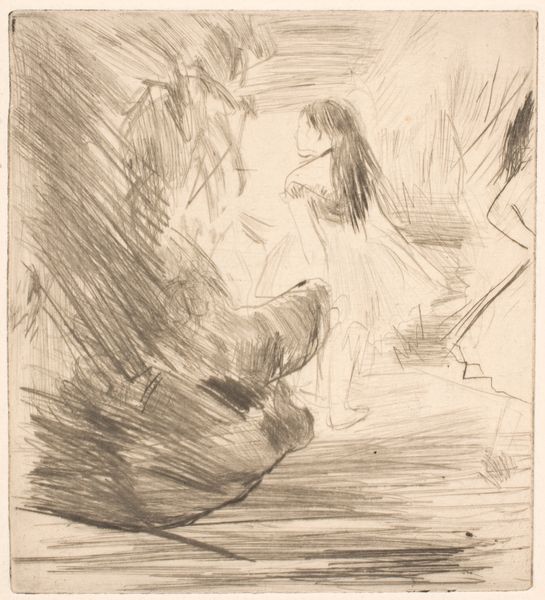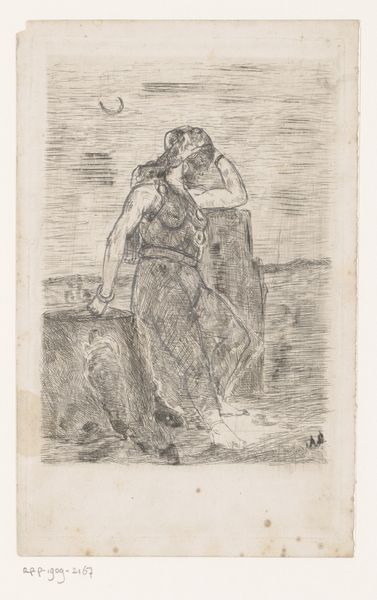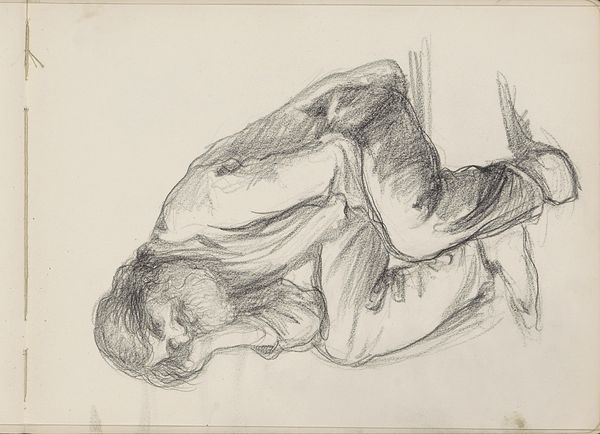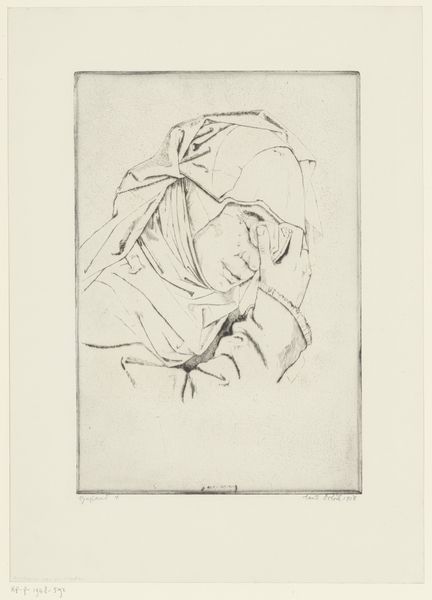
drawing, ink, pen
#
portrait
#
drawing
#
ink drawing
#
pen sketch
#
german-expressionism
#
figuration
#
ink
#
pen-ink sketch
#
expressionism
#
pen
Dimensions: height 209 mm, width 178 mm
Copyright: Rijks Museum: Open Domain
Curator: This pen and ink drawing by Adolf Eduard Herstein, made sometime between 1879 and 1932, titled "Man met gebogen hoofd en opgeheven hand," captures my attention. The Rijksmuseum holds it now, if you ever wish to see it. Editor: It strikes me as inherently tragic, even in its simplicity. The stark black lines against the white background create a visual drama, and the subject’s posture is weighted with despair or perhaps deep introspection. Curator: Absolutely. Note the prominent hand—almost shielding the man's face, acting as both barrier and supplication. Throughout various cultures, raised hands symbolize everything from surrender to receiving divine grace. I can't help but consider its dual symbolism in relation to psychological defense. Editor: And the heavy shading, the frenetic strokes. These contribute to a feeling of unease. This technique is used well to convey inner turmoil and raw emotion, doesn't it? A textbook example of Expressionist angst perhaps, given the movement it aligns with? Curator: Exactly. Expressionism delves into the inner experience. But let's consider context. The artwork dates somewhere within a very wide period that bookends some major shifts in thought about perception, psychology and society as a whole, beginning around the time when psychoanalysis was getting popular. Perhaps this individual is in active dialogue with forces of the mind itself, something he's both surrendering to and actively questioning. Editor: Interesting. What about the formal qualities – the slightly skewed perspective, the way the lines don’t quite resolve themselves into a fully realized figure? Is that perhaps an echo of a fractured psyche? A conscious rejection of conventional artistic norms? Curator: Undoubtedly a break with tradition. Yet, if the posture speaks to psychological pressure, it also echoes religious paintings that signal pain, repentance, or seeking heavenly intervention through a raised hand, so tradition certainly hangs in the air in my view. Editor: So, what starts as a study of pure form spirals outwards into layered possibilities of expression, suffering, maybe even religious symbolism. Curator: Indeed. A small work inviting large interpretations. Editor: Leaving us to contemplate, not just a drawing, but the human condition itself.
Comments
No comments
Be the first to comment and join the conversation on the ultimate creative platform.
